How to Make Your Business Attractive for a Buyout: The Ultimate Exit Strategy Guide
Planning an exit strategy isn't just for when you're ready to retire – it's about building a valuable, sustainable business that could attract buyers at any time. Whether you're planning to sell in 2 years or 20, making your business acquisition-ready increases its value and your options.
What Makes a Business Attractive to Buyers?
Buyers look for businesses that can operate successfully without the current owner and generate predictable profits. They want to acquire assets, systems, and cash flow – not just buy themselves a job.
Key Buyer Motivations:
Stable, growing revenue streams
Established customer base
Efficient operations and systems
Strong market position
Growth potential
Financial Attractiveness
1. Strong Financial Performance
Consistent Profitability:
Show 3-5 years of steady or growing profits
Maintain healthy profit margins
Demonstrate financial stability through economic cycles
Clean Financial Records:
Professional bookkeeping and accounting
Regular financial statements
Clear separation of business and personal expenses
Proper tax compliance
Predictable Cash Flow:
Recurring revenue streams
Diversified customer base
Long-term contracts or agreements
Minimal seasonal fluctuations
2. Key Financial Metrics Buyers Evaluate
Revenue Growth:
Consistent year-over-year increases
Multiple revenue streams
Market share growth
Pricing power
Profitability Ratios:
Gross profit margins above industry average
Strong EBITDA (Earnings Before Interest, Taxes, Depreciation, Amortization)
Efficient cost structure
Scalable profit model
Working Capital Management:
Efficient inventory turnover
Strong accounts receivable collection
Manageable accounts payable
Positive cash conversion cycle
Operational Excellence
1. Systems and Processes
Documented Procedures:
Standard operating procedures (SOPs)
Employee handbooks and training materials
Quality control systems
Workflow documentation
Technology Infrastructure:
Modern, scalable technology systems
Customer relationship management (CRM)
Inventory management systems
Financial management software
Operational Efficiency:
Streamlined processes
Minimal waste and inefficiencies
Automated routine tasks
Measurable performance metrics
2. Management and Staff
Strong Management Team:
Experienced, capable managers
Clear organizational structure
Succession planning
Ability to operate without owner
Skilled Workforce:
Well-trained employees
Low turnover rates
Competitive compensation packages
Clear job descriptions and responsibilities
Key Person Risk Mitigation:
Reduce dependence on owner
Cross-train employees
Document institutional knowledge
Develop leadership pipeline
Market Position and Growth Potential
1. Competitive Advantages
Unique Value Proposition:
Clear differentiation from competitors
Strong brand recognition
Proprietary products or services
Exclusive supplier relationships
Market Leadership:
Significant market share
Industry reputation
Thought leadership position
Customer loyalty
2. Growth Opportunities
Scalability:
Ability to grow without proportional cost increases
Expandable market opportunities
Franchise or licensing potential
Geographic expansion possibilities
Innovation Pipeline:
New product or service development
Technology improvements
Market expansion strategies
Strategic partnership opportunities
Customer Base Strength
1. Customer Diversification
Avoid Customer Concentration:
No single customer represents more than 10-15% of revenue
Broad customer base across different segments
Multiple geographic markets
Various customer sizes
2. Customer Relationships
Strong Customer Loyalty:
High customer retention rates
Long-term customer relationships
Recurring business patterns
Positive customer feedback and reviews
Contractual Relationships:
Long-term contracts
Service agreements
Subscription models
Exclusive arrangements
Legal and Compliance Readiness
1. Legal Structure
Proper Business Structure:
Appropriate entity type (LLC, Corporation)
Clear ownership structure
Updated corporate documents
Proper licensing and permits
2. Intellectual Property
Protected Assets:
Registered trademarks and copyrights
Patent protection where applicable
Trade secret protection
Non-disclosure agreements
3. Compliance
Regulatory Compliance:
Industry-specific regulations
Employment law compliance
Environmental regulations
Data protection and privacy laws
Steps to Prepare for a Buyout
3-5 Years Before Sale
Financial Foundation:
Implement professional accounting systems
Establish consistent financial reporting
Build strong profit margins
Diversify revenue streams
Operational Systems:
Document all processes and procedures
Implement scalable technology systems
Build strong management team
Reduce owner dependence
1-2 Years Before Sale
Financial Optimization:
Clean up financial statements
Maximize EBITDA
Resolve any outstanding issues
Prepare detailed financial projections
Due Diligence Preparation:
Organize all business documents
Update legal agreements
Resolve any compliance issues
Prepare management presentations
6-12 Months Before Sale
Market Preparation:
Engage business broker or investment banker
Prepare confidential information memorandum
Identify potential buyers
Determine valuation range
Common Valuation Methods
1. Multiple of Earnings
Typically 2-6x EBITDA for small businesses
Higher multiples for growing, profitable businesses
Industry-specific variations
2. Revenue Multiples
Common for service businesses
Typically 0.5-3x annual revenue
Depends on profit margins and growth
3. Asset-Based Valuation
Book value of assets minus liabilities
More relevant for asset-heavy businesses
May include intangible asset premiums
Maximizing Your Business Value
1. Financial Performance
Focus on profitable growth
Improve operational efficiency
Build recurring revenue streams
Maintain strong cash flow
2. Risk Reduction
Diversify customer base
Reduce key person dependence
Implement strong controls
Maintain compliance
3. Growth Potential
Identify expansion opportunities
Develop new products/services
Build strategic partnerships
Invest in technology and innovation
Common Mistakes That Hurt Value
1. Owner Dependence
Business can't operate without owner
Lack of management depth
Personal relationships drive business
Undocumented processes
2. Financial Issues
Poor record keeping
Inconsistent profitability
Customer concentration
Declining performance
3. Operational Problems
Outdated systems and processes
High employee turnover
Quality control issues
Compliance problems
Working with Professionals
When to Engage Experts:
Business Broker: For businesses under $5 million
Investment Banker: For larger transactions
Attorney: For legal structure and contracts
Accountant: For financial optimization and tax planning
Business Consultant: For operational improvements
The Bottom Line
Making your business attractive for a buyout isn't just about preparing for an exit – it's about building a stronger, more valuable business. The same factors that make a business attractive to buyers also make it more profitable, efficient, and sustainable for current operations.
Make good with your time by implementing these strategies systematically over several years. Start with financial and operational foundations, then build toward market leadership and growth potential. Even if you never sell, you'll have created a more valuable and enjoyable business to own and operate.
Remember: The best time to prepare for a buyout is long before you want to sell. Buyers pay premium prices for businesses that are well-run, profitable, and positioned for continued success without the current owner.
